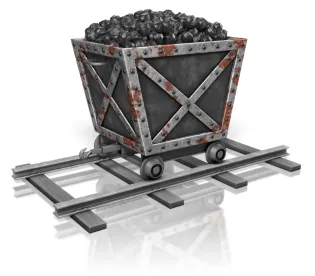Although a defective piece of mobile equipment, which was restored to service, improperly moved despite the inactivation of the equipment, it did so too slowly to make an injury reasonably likely, an administrative law judge (ALJ) has ruled.
In September 2014, an employee at a cement plant in Indiana called in a hazard complaint, alleging a supervisor had ordered a defective skid steer loader to be put back into service after the miner had tagged it out for repair following a pre-operational (pre-op) inspection. The employee found the loader continued to move on its own after the machine was placed in the neutral position and the machine operator had taken his hands off of the controls.
After confirming the defective condition, an inspector for the Mine Safety and Health Administration cited the operator for violation of the requirement that mobile equipment with a defect affecting safety to be repaired in a timely fashion (30 CFR 56.14100(b)). He also classified the violation both as significant and substantial (S&S), because he believed a serious injury was reasonably likely, and as unwarrantable failure, since he believed the operator’s behavior constituted aggravated conduct beyond ordinary negligence. The inspector determined the operator had put the machine back into service with no immediate plan to make repairs and had failed to warn other employees who were likely to operate the loader of the defect. MSHA specially assessed a penalty of $5,300.
ALJ David Barbour upheld the violation, but, after hearing testimony that management considered the problem inconsequential because the loader crept only about one inch every five seconds (about one-hundredth mile per hour), Judge Barbour did not agree a serious injury was likely. “The primary consideration leading to this finding is the defective vehicle’s slow rate of movement,” he said. The machine is used daily for maintenance and cleanup. The judge accepted as credible the operator’s testimony that miners typically work to the side of the machine, rather than in front of it, and have no reason to turn their backs to it. “Such miners could easily move out of the way if the skid steer began to creep,” Barbour concluded. MSHA v. Buzzi Unicem USA, FMSHRC No. 2015-329-M (Feb. 11, 2016).
MSHA also contended the defect would have worsened during continued mining operations. However, the operator introduced evidence that the condition had persisted for about two months before MSHA cited the violation, without worsening, although the defect had not been documented on the pre-op form. “Given that timeline, the court does not find it likely that this condition would deteriorate significantly enough with continued mining operation to make an injury reasonably likely,” Barbour said. He agreed with MSHA that the operator’s negligence was high.
Because the judge dismissed the S&S finding, he also vacated the unwarrantable failure finding and reduced the penalty to $634.




 />i
/>i

